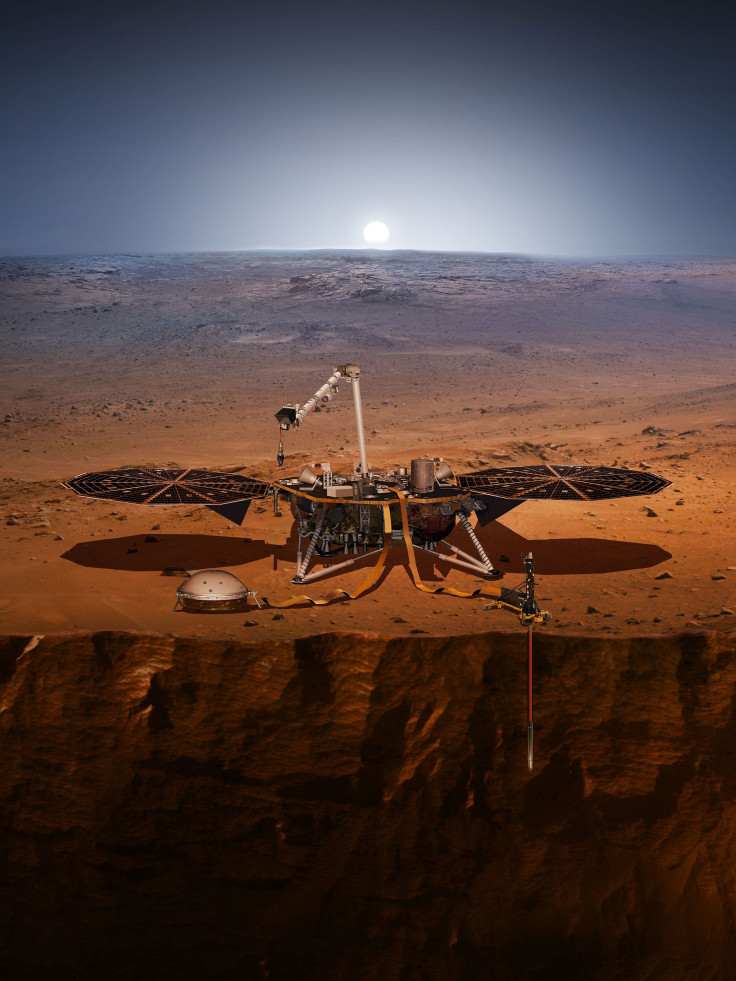NASA’s Next Mars Mission, InSight, Set For May 5 Launch

The next mission to Mars is almost here. NASA has set May 5 as the launch date for its Interior Exploration using Seismic Investigations, Geodesy and Heat Transport, or InSight, mission.
InSight is a lander mission, which means the spacecraft will land on the surface of the red planet and then stay stationary where it will land. This is different from rovers, which land on the surface and then move around, or orbiters, which don’t land at all but instead orbit the planet or moon (or even asteroids and comets) that are their targets of scientific study.
NASA called it the “first-ever mission to study the heart of Mars” and also “the first planetary mission to take off from the West Coast,” in a statement Saturday. The space agency said the two-hour launch window would open at 7:05 a.m. EDT May 5, for the rocket to lift-off from Space Launch Complex-3 at Vandenberg Air Force Base in California. An Atlas V rocket, built by the United Launch Alliance — a joint venture between Lockheed Martin Space Systems and Boeing Defense, Space & Security — would serve as the launch vehicle.
As part of its scientific mission, InSight would measure the output of heat from the Martian interior and also record marsquakes — the Martian equivalent to earthquakes on our home planet. The record of seismic activity on Mars would allow for a map of the red planet’s deep interior to be created. This knowledge would help further our understanding of the formation of terrestrial planets like Mars, and of course, Earth.
If the launch goes according to schedule, the spacecraft would reach Mars in November.
During testing of the spacecraft’s solar panels in January, Bruce Banerdt of NASA’s Jet Propulsion Laboratory and the mission’s principal investigator, said of the mission: “Think of InSight as Mars’ first health checkup in more than 4.5 billion years. We’ll study its pulse by ‘listening’ for marsquakes with a seismometer. We’ll take its temperature with a heat probe. And we’ll check its reflexes with a radio experiment.”
Along with a variety of scientific instruments, InSight is also carrying to Mars two microchips with names of almost 2.5 million people on them. One of them, attached in 2015, has 800,000 names submitted by the public, and the other, affixed in January, has another 1.6 million names.
“It’s a fun way for the public to feel personally invested in the mission. We’re happy to have them along for the ride,” Banerdt said.
The launch will be visible with the naked eye from large parts of California, all the way from San Diego up to Santa Maria. NASA also has official viewing points for the launch, as well as a list of unofficial places from where the launch could be seen.
© Copyright IBTimes 2024. All rights reserved.





















